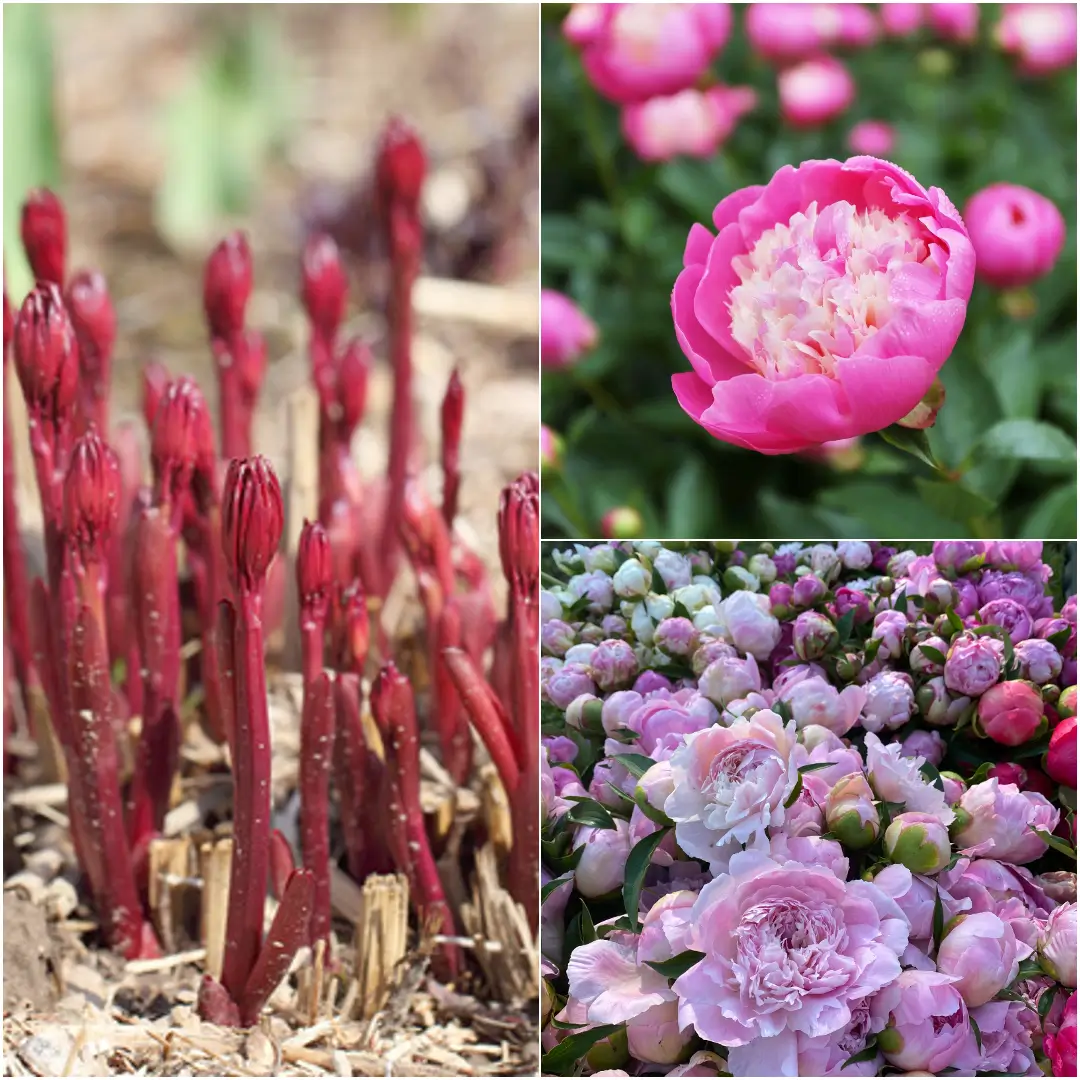Peonies are like the celebrities of the garden world—boasting stunning blooms that can easily steal the show. If you’ve ever marveled at their grand flowers, you might be wondering how to grow peonies in your own backyard. In this comprehensive guide, I’ll walk you through everything you need to know, from soil requirements to common issues. Let’s dig in!
Understanding Peonies: The Basics
Before we dive into the nitty-gritty, let’s take a moment to understand what makes peonies so special. There are three main types of peonies: herbaceous, tree, and intersectional hybrids. Each type has its quirks and needs, but they all share a common love for proper care.
Soil Requirements
The Right Type of Soil
Peonies are pretty particular when it comes to their soil. They thrive in moist but well-drained soil. Imagine a sponge that holds some water but allows excess to flow away—this is the sweet spot for peonies.
- Herbaceous Peonies: Prefer rich, slightly alkaline soil. Think of it as their luxurious home where they can flourish.
- Tree Peonies: More adaptable, they can tolerate slightly acidic soils. It’s like a cozy apartment that suits their needs.
Tip for Testing Soil
If you’re unsure about your soil’s pH, you can buy a simple soil testing kit. A little knowledge goes a long way in nurturing these beauties!
Sunlight: Peonies Love to Shine
Optimal Light Conditions
When it comes to sunlight, peonies are sun worshippers. They require full sun for optimal growth. So, think about the sunniest spot in your garden.
- Why Full Sun?: Full sun helps them produce those gorgeous blooms. If they’re kept in the shade, they might just sulk and produce fewer flowers.
Planting Tips
Timing Is Everything
The best times to plant peonies are in autumn or spring. Each season has its perks, but both will give your peonies a solid start.
Planting Steps:
- Immediate Planting: If you’ve got bare-root plants, plant them as soon as they arrive. They’re like eager puppies waiting to dig into the soil!
- Planting Depth: Be cautious not to plant them too deeply. If you do, the results might be disappointing. Think about it—it’s like trying to grow a tree in a deep hole; it just won’t work well!
- Organic Matter: Mix in plenty of well-rotted organic matter before planting. This gives them the nutrient boost they need. It’s like adding a delicious topping to your favorite dish!
- Fertilizer: In spring, apply a balanced fertilizer to kickstart their growth.
Watering Wisely
Avoid Overwatering
Newly planted peonies are prone to failure if overwatered. Think of it like giving a baby too much milk; moderation is key!
- Watering Frequency: Check the soil moisture regularly and water only when necessary.
Support: A Helping Hand
Why Support Matters
With their large, stunning flowers, some peony varieties may need a little support to prevent drooping.
- Plant Supports: Use cages or stakes as needed. It’s like giving them a strong friend to lean on!
Care and Maintenance
Seasonal Care Routine
To keep your peonies thriving, you’ll need to adopt a care routine:
Cutting Back
- Herbaceous Peonies: Cut them back hard to ground level in autumn. This encourages fresh growth in spring.
- Tree Peonies: They don’t require hard pruning, but do remove faded seed heads to keep things tidy.
Foliage Management
- Don’t pick off faded foliage; let it fall naturally. This helps maintain the health of the plant.
Weeding with Care
When weeding around your peonies, be gentle. Try not to step on the newly forming buds of herbaceous types. Think of it like tiptoeing around delicate flowers—it’s all about respect!
Propagation: Expanding Your Peony Collection
How to Propagate Peonies
If you want to share your peony love, propagation is the way to go:
Herbaceous Peonies
- Division in Autumn: Cut back the faded foliage and lift the plant. With a knife, cut sections of the crown, ensuring each has at least three buds. Replant immediately to keep the roots moist.
Tree Peonies
- Layering or Sowing Seed: Tree peonies are trickier; they shouldn’t be divided. Instead, try layering a pliable stem or sowing seeds. It’s like nurturing a little peony army!
Common Issues: Troubleshooting Your Peonies
Peony Buds and Ants
Peony buds might attract ants, which can be alarming. But don’t fret! These little critters won’t harm your plants. They’re just there for the sweet nectar.
Peony Wilt
The most common issue you may face is peony wilt, caused by botrytis.
- Prevention Tips:
- Avoid planting them too closely together to ensure good air circulation.
- Remove any leaves with dark spots to minimize the spread of the fungus.
When cutting back herbaceous types in autumn, clear up all foliage to avoid reinfection in spring. It’s all about cleanliness!
Purchasing Tips: Finding the Perfect Peony
When you’re ready to buy peonies, keep these tips in mind:
Choose Wisely
- Size Matters: Buy the largest peony you can afford. Bigger plants often establish quicker and bloom sooner.
- Inspect for Damage: Check your peony for signs of pests or damage before you buy. A little diligence can save you headaches later!
Recommended Varieties: Your Peony Options
Now that you know how to grow peonies, let’s explore some fantastic varieties to consider for your garden:
Herbaceous Peonies:
- Paeonia lactiflora ‘Angel Cheeks’: Known for its candy-floss pink double flowers, reaching about 70cm in height. A whimsical choice!
- Paeonia ‘Bowl of Beauty’: This popular variety features bright pink flowers and stands at 90cm—perfect for adding a pop of color!
- Paeonia ‘Sarah Bernhardt’: With large, perfumed pale-pink flowers, this herbaceous type is ideal for cutting, reaching 90cm.
Tree Peonies:
- Paeonia ‘Mrs William Kelway’: A stunning tree peony with semi-double pure white flowers, growing to a mature height of 120cm.
- Paeonia ‘Souvenir de Maxine Cornu’: This showstopper features double yellow and orange blooms that hang downwards, also reaching 120cm in height.
Your Peony Adventure Awaits!
Growing peonies may seem daunting, but with the right knowledge and a little love, you can create a breathtaking floral display in your garden. Remember, these plants require specific soil, ample sunlight, and thoughtful care. Keep an eye out for common issues and don’t hesitate to propagate your favorites to share with friends!
So, are you ready to embark on your peony adventure? With patience and dedication, you’ll soon be enjoying these stunning blooms, adding beauty and joy to your outdoor space!
FAQs
Where do peonies grow best?
Peonies thrive in well-drained, moist soil that’s rich and slightly alkaline for herbaceous types. They prefer full sun, so the best spots in your garden are areas that receive at least six hours of direct sunlight each day. A sheltered position can also benefit tree peonies, especially in colder climates.
Are peonies easy to grow?
Yes, peonies are generally considered easy to grow, especially if you provide them with the right conditions. They require minimal maintenance once established, making them a great choice for both novice and experienced gardeners.
How do you grow peonies for beginners?
For beginners, start by selecting a sunny spot with well-drained soil. Plant peonies in the spring or autumn, ensuring not to bury them too deeply. Regular watering (but avoiding overwatering) and a bit of fertilizer in the spring will help them thrive. Remember to cut back herbaceous peonies in the fall!
What month is best to plant peonies?
The best months to plant peonies are typically in early spring or in the fall, around September to October. Planting during these times allows the roots to establish before the heat of summer or the chill of winter sets in.


